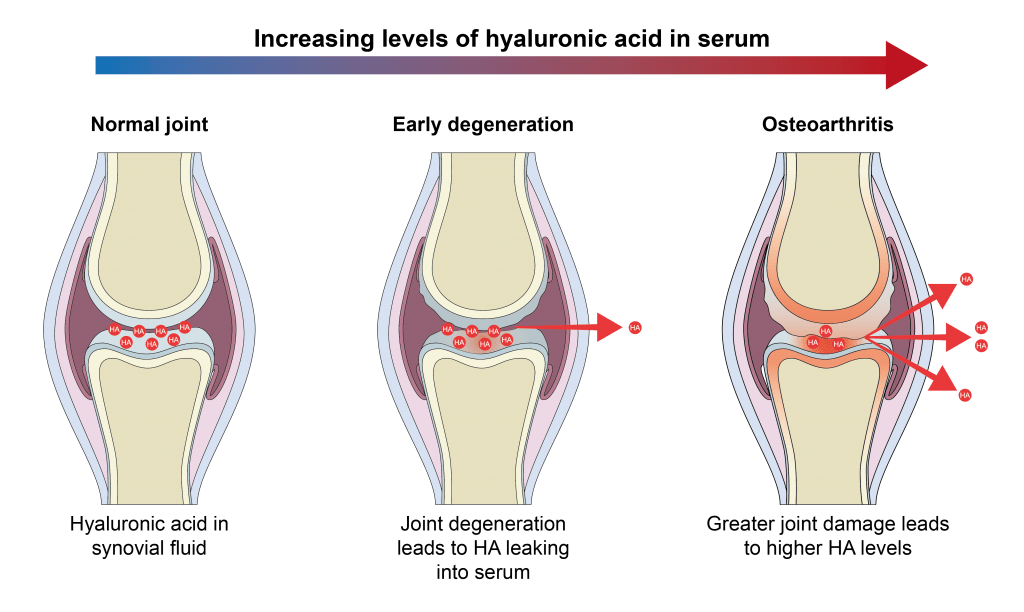
Hyaluronic Acid (HA) is a molecule that exists inside the joints in cats, dogs and humans. Its main purpose is to lubricate and prevent the bones in the joint from rubbing against each other, breaking down, and causing bone and ligament damage. As joints degrade, this molecule is leaked into the blood stream, where testing picks it up. The higher the HA value, the more damage occurring in the joint.

Visual cues such as decrease in activity, limping or favoring a limb, difficulty getting up, and more are the current indicators of joint problems. By this point the damage to the joints has already had an impact on the patient where the signs are visible.

By testing Hyaluronic Acid levels during routine health checkups, early indications that breakdown is occurring can be found. As the values approach 20 ng/mL, the likelihood of Degenerative Joint Disease (DJD)/Osteoarthritis increases.
Why Test?
Early Detection
As dogs age joints break down. It’s a natural process that often happens over a long period of time. By identifying this breakdown early, we can take steps to minimize the damage and keep your dog moving and feeling great.
Options for treatment
There are numerous options available for managing dogs with joint problems. The earlier we start, the better the outcomes tend to be. Therapy can be as simple as diet change and supplements.
Targeted therapies, like nutraceuticals, are common, and even more advanced therapy like PRP & Stem Cell Therapy are getting more common. With early detection, we can choose the right way to manage the dog’s joints.
How Often Is Testing Needed?
Annual testing for younger dogs is ok, but as they get closer to 10 years old, testing frequency should increase. Once joint damage is identified and is being managed, the same testing can be used to monitor how well the damage is being controlled and slowed. Monitoring intervals will be determined by severity of damage and therapy protocol.
Which Dogs Should Be Tested?
Joint health is important for all dogs. As they age the joint breaks down, but some dogs are at higher risk for joint problems. Dogs at higher risk are:
- Active/Sporting Dogs
- Agility Dogs
- Working Dogs
- Large & Giant Breeds
- Breeds prone to skeletal disorders: dachshund, bulldogs, basset houts, etc.
What About Cats?
VDI is currently validating Hyaluronic Acid for use in testing Degenerative Joint Disease/Osteoarthritis in cats. Once validation is complete, this test should be available for use on cats.
Ordering Hyaluronic Acid Tests
VDI offers Hyaluronic Acid as part of a few different panels for different applications.
Wellness
Osteoarthritis Assessment (added to any wellness panel)
Intended for the early detection of joint damage in the otherwise healthy dog.
Hyaluronic Acid (standalone)
HA can be ordered by itself to detect and manage joint disease, not part of a larger wellness panel.
Acute Care
Osteoarthritis Panel
Intended for the rule-in of osteoarthritis, and managing the outcomes of therapy.
Pre-Stem Cell Therapy Panel
For dogs with DJD considering Stem Cell Therapy. This panel is intended to confirm the dog is cancer free prior to therapy, and monitor outcomes of therapy to confirm effectiveness.
